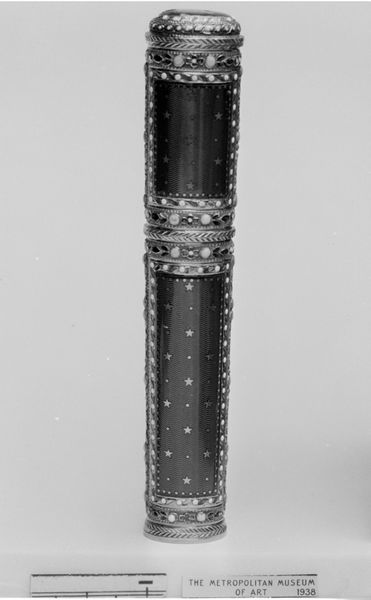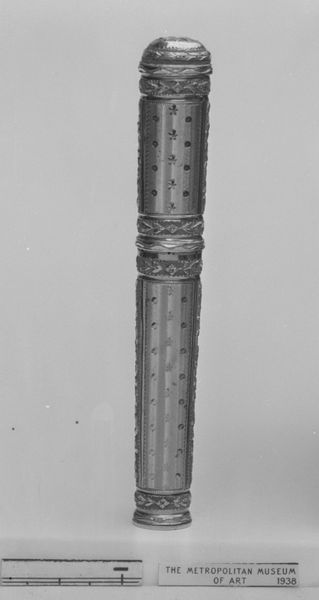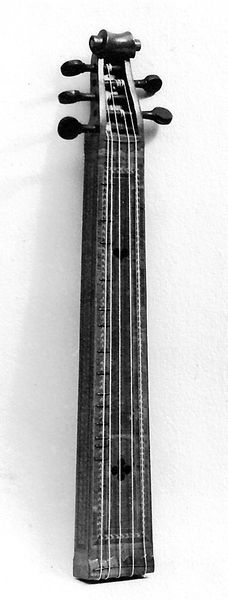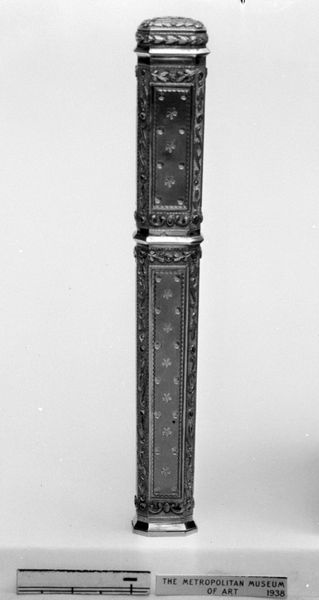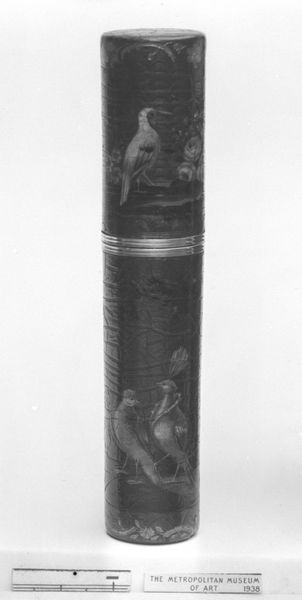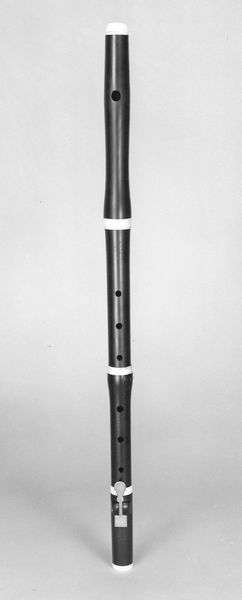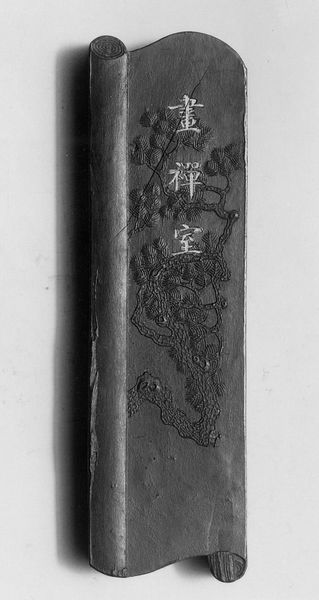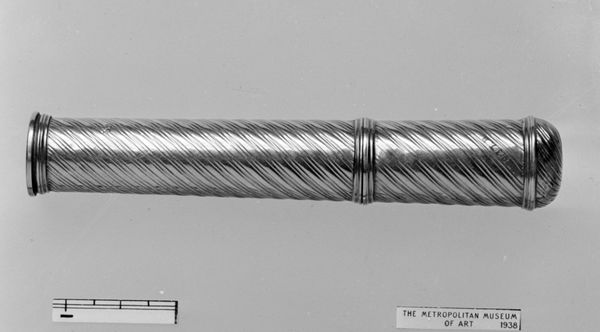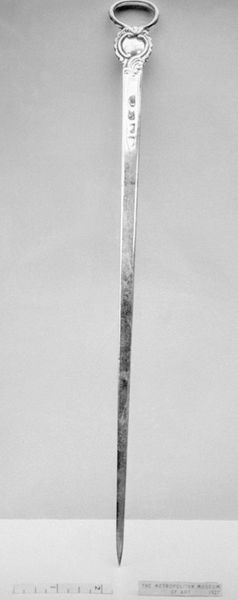
Sealing wax case (étui) 1777 - 1778
0:00
0:00
Dimensions: Length: 4 1/2 in. (11.4 cm)
Copyright: Public Domain
Curator: At first glance, this meticulously crafted cylinder speaks to constraint and refinement. Editor: Indeed. What we are looking at is a sealing wax case made by Nicolas-Jean-Baptiste Choconain-Delauney, circa 1777-78. It’s currently housed at the Metropolitan Museum of Art. Curator: The metalwork and decorative detailing... it whispers of Rococo indulgence while paradoxically concealing a functional object. Think about who might have owned this, and who might have been excluded from its associated practice: formal correspondence. Editor: The visual organization is quite clever, though. Notice the clear tripartite division: the elaborately ornamented cap and base mirroring each other, sandwiching the textured body of the cylinder, segmented by decorative rings at the middle. The texture provides a tactile quality that invites touch. Curator: That "invitation to touch" was very gendered. Women's literacy in that period often went unrecognized; so who benefited from these communications? Whose voices were deemed worthy of documentation and preservation via the sealed letter? Editor: I can’t deny the history, but I remain transfixed by the quality of execution. The way light plays on the intricate details, it elevates something purely utilitarian to an object of undeniable beauty. Even its rigid form contributes to the elegance by imposing structure upon the embellishment. Curator: While acknowledging its aesthetic merit, we can also explore the wider societal implications of what the case represented. This level of sophistication underscores disparities and access related to social power at the time. How objects reinforce particular realities that marginalize certain groups based on gender and class requires deep introspection. Editor: I still feel moved by the visual composition itself, but understanding the context adds another dimension to appreciation—and discomfort. Curator: Exactly, we should look beyond pretty shapes and try to identify and understand power relations expressed materially. Editor: True. Even though aesthetics were foregrounded for me at the beginning, now, by viewing historical power imbalances the case can offer, that might just change my outlook entirely.
Comments
No comments
Be the first to comment and join the conversation on the ultimate creative platform.
